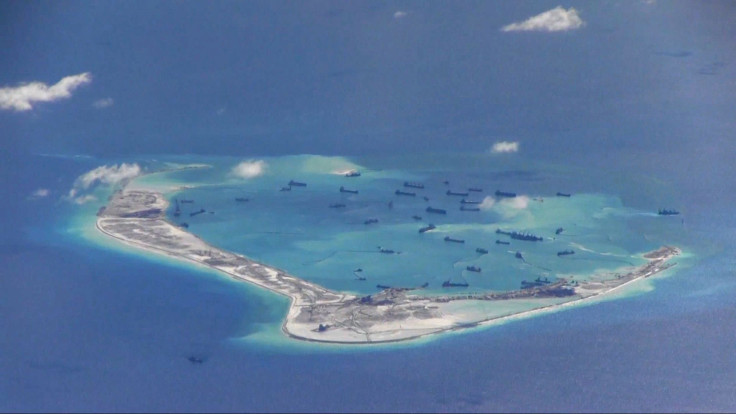Beijing Planning Air Defense Zone In South China Sea, Could Deepen Tensions With US

KEY POINTS
- China introduced Air Defense Identification Zone in the East China Sea in 2013
- These caused tensions between Tokyo and Beijing
- Tokyo responded by establishing its own ADIZ over the group of islands in the region
In November 2013, China introduced Air Defense Identification Zone (ADIZ) in the East China Sea to gain control of the airspace above the disputed Senkakus (or Diaoyu) islands off the coast of Taiwan. The year before, Tokyo had purchased the islands from a private owner so the move to establish the ADIZ caused some tensions between Tokyo and Beijing.
Tokyo responded by establishing an ADIZ of its own encompassing the group of uninhabited islands in the East China Sea that are claimed by Japan, mainland China and Taiwan.
According to a 2017 report by the Center for Strategic and International Studies (CSIS), a Washington-based think tank, the 2013 ADIZ was first planned in 2010 when Chinese authorities told a Japanese delegation visiting Beijing that they were considering establishing it in the East China Sea. The proposed move was met with a backlash, with both Japan and the United States denouncing it.
A military insider said that the 2010 planning phase of the East China Sea ADIZ also included plans to establish one in the South China Sea.
Lu Li-Shih, a former instructor at Taiwan’s Naval Academy in Kaohsiung said, “China announced the first ADIZ earlier than planned because of the need to assert its sovereignty over the Diaoyu Islands.”
Li-Shih added that the construction and development of artificial islands in the South China Sea, particularly the airstrips and radar systems built on Fiery Cross, Subi and Mischief reefs, were all part of Beijing’s 2010 ADIZ plan.
Yet another source from the People’s Liberation Army (PLA), who spoke on condition of anonymity, said the proposed ADIZ encompasses the Pratas, Paracel and Spratly Islands in the disputed waterway.
The same unnamed source told the South Morning China Post, “Beijing has been hesitant to declare the ADIZ in the South China Sea due to a number of technical, political, and diplomatic considerations. But the most practical problem is that the PLA has in the past not had the capability to scramble its fighter jets to expel intrusive foreign aircraft in the South China Sea, which is several times the size of the East China Sea, and the cost to support the ADIZ would be huge.”
Many countries have ADZIs, typically airspace over an undisputed area of land or water, in which the monitoring and control of aircraft are performed in the interests of national security. ADZIs are not defined or regulated by any international treaty or agency.
Drew Thompson, a visiting senior research fellow at the Lee Kuan Yew School of Public Policy, National University of Singapore shared his views on the matter. “Such a declaration would severely damage China’s relations with Southeast Asian states, which until now have largely acquiesced to China’s assertiveness and provocations, including land reclamation and militarization of features,” he said.
“But should China declare an ADIZ, they would be forced to choose, not between the US and China, but between their economic relationship with China and their own sovereignty,” Thompson added.

© Copyright IBTimes 2024. All rights reserved.





















